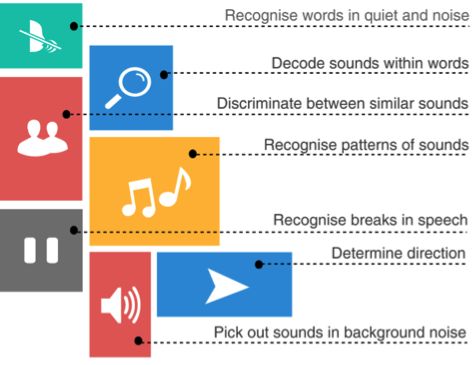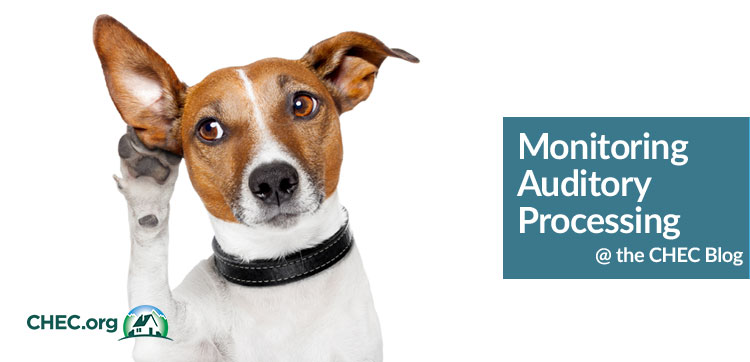

Selective attention is the process of allocating resources on specific input, whereas divided attention is the process of resource allocation between different stimuli by rapidly shifting or splitting focus ( Parasuraman, 1998). Sustained attention is the vigilant focus on stimuli and is considered a basic function that determines selective and divided attention ( Sarter et al., 2001). This discussion directly impacts selection of diagnostic tests and APD diagnosis.Īttention is being defined as an individual's selection from a multitude of available sensory information ( Hahn et al., 2008), while these selected stimuli are perceived and then processed ( Broadbent, 1958). The influence of cognitive top-down functions on Auditory Processing (AP) tests is a point of scientific debate between the British Society of Audiology ( British Society of Audiology, 2011a) 1 and the American Speech-Language Hearing Association ( American Speech-Language-Hearing Association, 2005b) 2 The British Society of Audiology argues that cognitive factors, such as attention and memory, influence AP ( British Society of Audiology, 2011a), whereas the American Speech-Language Hearing Association states that deficits in the auditory pathway alone should define APD ( American Speech-Language-Hearing Association, 2005b). Among other symptoms in children with APD, poor auditory attention span and distractibility are commonly reported ( American Speech-Language-Hearing Association, 2005a American Academy of Audiology, 2010). Revising diagnostic criteria to incorporate attention tests and the inattentive type of APD in the test battery, provides additional useful data to clinicians to ensure careful interpretation of APD assessments.Īuditory Processing Disorder (APD) is characterised by normal peripheral hearing, but abnormal processing of auditory information within the central auditory nervous system ( Martin and Keith, 2009) and by deficits in sound-in-noise discrimination ( Dawes and Bishop, 2009 Lagacé et al., 2011 Keith and Purdy, 2014). Attention deficits in children with APD appear to be centred around the auditory modality but further examination of types of attention in both modalities is required. The findings show that a subgroup of children with APD demonstrates underlying sustained and divided attention deficits. Finally, the newly proposed diagnostic battery, identifying an inattentive subtype of APD, identified five children who would have otherwise been considered not having ADs. The proposed APD battery excluding AD cases did not have a significantly different diagnosis proportion than the standard APD battery. The standard APD battery identified a larger proportion of participants as having APD, than an attention battery identified as having Attention Deficits (ADs). Divided auditory and divided auditory-visual attention strongly correlated with the dichotic digits test, r = 0.68, p < 0.05, and r = 0.76, p = 0.01, respectively, in a sample of 20 children with APD diagnosis. Pearson's partial correlation analysis examining the relationship between these tests and Cochrane's Q test analysis comparing proportions of diagnosis under each proposed battery were conducted. The validated test of everyday attention for children, with visual and auditory attention tasks, the listening in spatialized noise sentences test, the children's communication checklist questionnaire and tests from a standard APD diagnostic test battery were administered. A pilot study including 27 children, aged 7–11 years, referred for APD assessment was conducted. The aim of the study was to examine the relationship between auditory and visual attention tests and auditory processing tests in children with APD and to assess whether a proposed diagnostic protocol for APD, including measures of attention, could provide useful information for APD management. Despite evidence linking auditory attention and deficits/symptoms of APD, measures of attention are not routinely used in APD diagnostic protocols. Measures of attention have been found to correlate with specific auditory processing tests in samples of children suspected of Auditory Processing Disorder (APD), but these relationships have not been adequately investigated. 6Biomedical Research Centre, National Institute for Health Research, London, United Kingdom.5Department of Neuro-Otology, National Hospital for Neurology and Neurosurgery, London, United Kingdom.4Department of Paediatric Audiology, Great Ormond Street Hospital, London, United Kingdom.

3Psychological Services, Great Ormond Street Hospital, London, United Kingdom.2Neuroscience Division, Aristotle University of Thessaloniki, Thessaloniki, Greece.1Ear Institute, Faculty of Brain Sciences, University College London, London, United Kingdom.Georgios Stavrinos 1 * Vassiliki-Maria Iliadou 2 Lindsey Edwards 3 Tony Sirimanna 4 Doris-Eva Bamiou 1,5,6


 0 kommentar(er)
0 kommentar(er)
